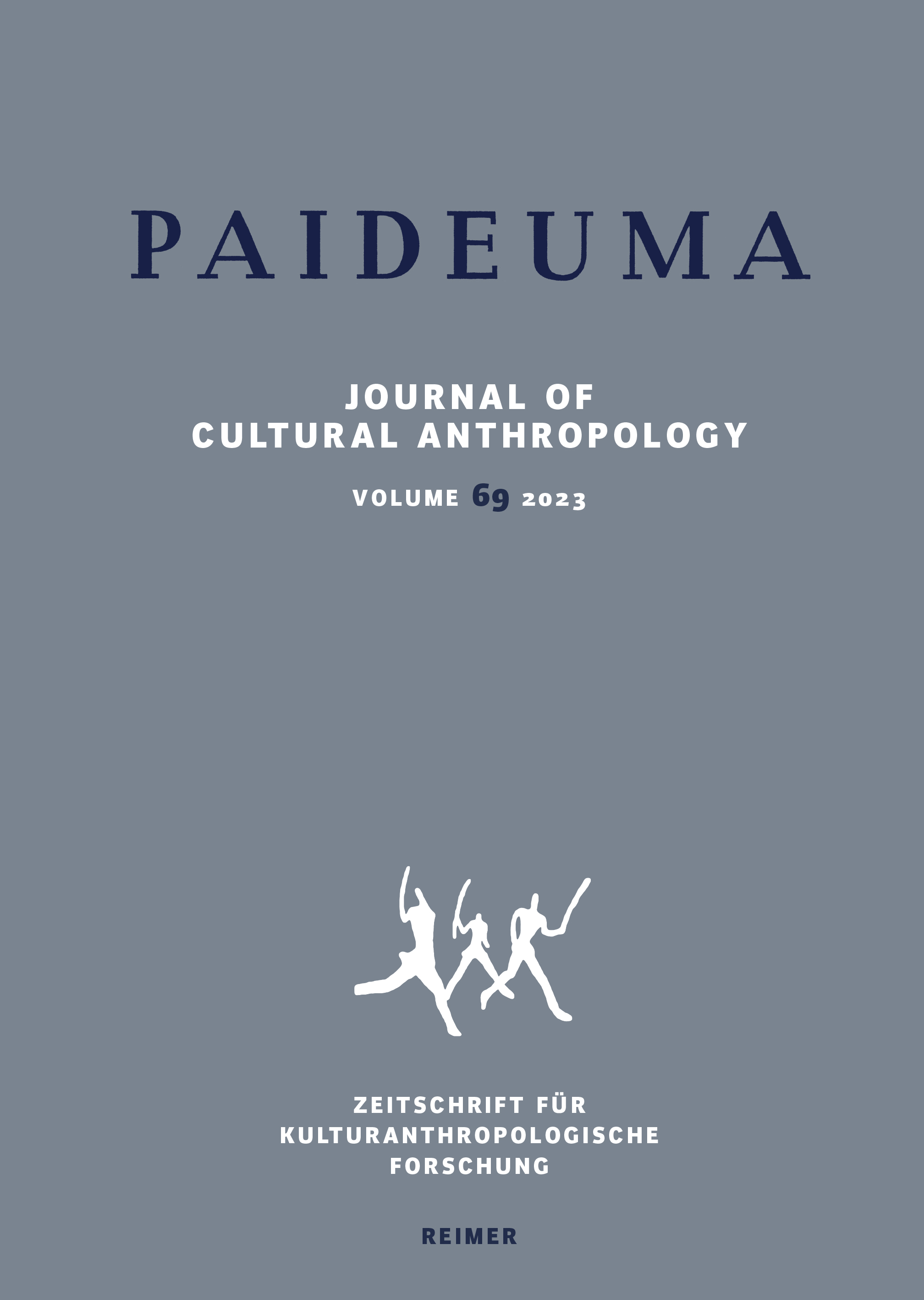Clock and watch
The rhythm of life in Tanebar-Evav (Kei Islands, Moluccas, Eastern Indonesia)
DOI:
https://doi.org/10.21248/paideuma.878Abstract
In the society of Tanebar-Evav, which is located on a small island to the southwest of the Kei archipelago, Southeast Moluccas, as in many other societies in the Lesser Sunda Islands, a sophisticated system of counting months has been developed that combines lunar cycles with the agricultural cycle, including movements and landmarks in the space of and around the island, in its marine territory. The different space-times are organized hierarchically and fix the relationships between houses and villagers under the guidance of the ‘elders’, who are responsible for the village governance. What is specific about Tanebar-Evav society is the asymmetry that exists between the cycle of the seasons and the ‘watch’ or ‘lookout’ of the Guardians of the Land which ritually marks the major event, the cultivation of millet, during about eight months of the year. In this regard, ritual sequences are all spatial-temporal markers. Methodologically, the analysis examines the vocabulary used for the different ways of evoking the past, present and future, night and day, the sun, the phases and positions of the moon and the seasons. This highlights what may appear to be incongruities or contradictions, particularly in relation to orientations, duration, the succession of generations in relation to the ancestors and the role of the elders at the front of the sailing boat keeping a lookout to avoid the risks to the society as a whole. Above all, these inconsistencies make it comparatively difficult to conceptualize different perceptions of time. The analysis refers to a number of social anthropologists who have addressed the concept of ‘time’ and its use in different types of society and relies on their suggestions.
Downloads
Veröffentlicht
Ausgabe
Rubrik
Lizenz
Copyright (c) 2024 Paideuma

Dieses Werk steht unter der Lizenz Creative Commons Namensnennung - Weitergabe unter gleichen Bedingungen 4.0 International.
Dieses Werk steht unter der Lizenz Creative Commons Namensnennung - Weitergabe unter gleichen Bedingungen 4.0.






